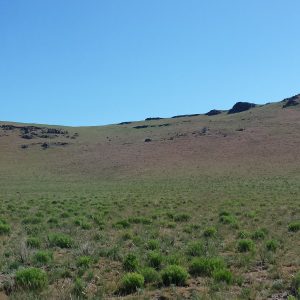“I like my job. The pay is generous… The fringe benefits are priceless: clean air to breathe; stillness, solitude, and space; an unobstructed view every day and every night of sun, sky, stars, clouds, mountains, moon…; a sense of time enough to let thought and feeling range from here to the end of the world and back; the discovery of something intimate – though impossible to name – in the remote.”
– Edward Abbey, Desert Solitaire
I have been experiencing the Great Basin desert for five and a half months now and I never thought I would find myself so appreciative of such a harsh environment. In his book, Desert Solitaire, Edward Abbey has put into words the feelings of awe and respect I have gained for this truly breathtaking area.
I started my internship at the tail end of winter, so for the majority of my time here, I have been spoiled by the colors of spring. It is incredible the variety of plants able to thrive (even for a short while) in this climate, but a wet spring has brought such beauties out of the seed bank as Leucocrinum montanum (common star lily), Calochortus nuttallii (sego lily), Grayia spinosa (spiny hop sage), and my thus-far-favorite-shrub, Psorothamnus polydenius (Nevada dalea). Each of these plants has caught my eye and my appreciation as they find ways to defy the heat and aridity to splash their colors all over the brown canvas that is Nevada.
Along with my love affair with the desert flora, I have fallen in love with the expansiveness of the mountains and valleys, the brilliant clarity of the night sky, and the stillness in the air during the long hours of seed collecting. In these moments, I find my thoughts escaping me and myself fully embraced by the presence of the stillness. Who knew the methodic pace of seed collecting could open the doorway to wakefulness? Even the scurrying of a jackrabbit or a lizard allows me a moment’s relief from my own swirl of thoughts. While I never pictured myself doing more than visiting the desert, I am so thankful to be living here for the majority of a year (I will be here until November) and to experience the wonders of this place.
While my thoughts have been idyllic in nature, I have made plenty of time to be silly and practical while at work. To beat the heat, my coworkers and I have started bringing a cooler full of ice with us for the long field days. The simple relief of some cold water or a cool forehead makes all the difference when there is no place to hide from the sun. I also jumped at the opportunity to take a fun photo a few weeks ago when we drove through Sheridan, Nevada while I was wearing a t-shirt from my hometown of Sheridan, Indiana. I even sent my mom an email with the tagline “I’m home…sort of!”

Taking time out of from seed collection scouting for a priceless photo opp. Photo credit: Olivia Schilling
Life in the Great Basin has been great so far and I look forward to enjoying the rest of my time here before I move on to the next step in life. Until next time, this is Maggie signing out from Carson City, Nevada!

























